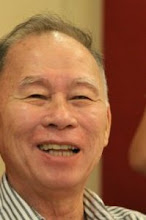The good news is that, for octogenarians among us, this phenomenon should no longer bother us. We should however be concerned about our descendants. The ”bahala na” attitude that prevails among Pinoys can mean the end of our lineage. We should be more responsive to what science is developing as suggested by the following: VISIONS OF HOPE and 2 other prognosticators. It’s all up to how we respond.
Over the next 50 years, humanity will experience change at an unprecedented pace. What lies ahead? And can science save us from catastrophe during what Sir Martin Rees has dubbed ‘our final century’?
Predicting things to come is fraught with uncertainty. Nevertheless, for the 50th issue of COSMOS, we decided to try: to commission four of our top writers to look at the best science today, and cast forward to the next 50 years and see what might change our lives, our cities, our economies and the planet on which we live.
How will we feed a world of nine billion – almost three times the number of people alive in 1963? How will we mitigate and adapt to climate change? What innovations are on the horizon that might allow us to live our lives in wealth and comfort, without stripping the planet of resources and damaging it beyond repair? And how will we care for ourselves in a smarter future… where our ageing population is more likely to be treated with an app rather than an aspirin.
The world’s population is ageing faster than ever before. It is an enduring phenomenon – according to the United Nations, we will never again return to the young populations our ancestors knew. As contributing editor Robin McKie discovered in our future health special, this ageing effect will have profound consequences, as our stressed health systems balance the needs of larger, frailer populations with the potential benefits of innovations in genetics, personalised healthcare and the increasing global interconnectivity brought by mobile devices.
Suzanne Cory was 21 in 1963. Now an immunologist and molecular biologist at the Walter and Eliza Hall Institute of Medical Research (WEHI) in Melbourne and president of the Australian Academy of Science, ’63 was the year Cory “fell in love with molecular biology”.
We should aim to have people remaining healthy right up to the last stages of their life, stresses Cory. “I would like to be as active as I am now and have been all my life until the day I drop dead. I suppose [living to age] 95 is a realistic dream right now; I think that’s certainly within the realms of possibility.”
“I think it’s very difficult to predict 50 years hence. If I’d asked even the most experienced and brightest scientists around me at that time, in 1963, I don’t think they would ever have predicted we would now be where we are –in terms of understanding or what we were tackling. So I think we can only see a little way forward, and through a glass dimly.”



